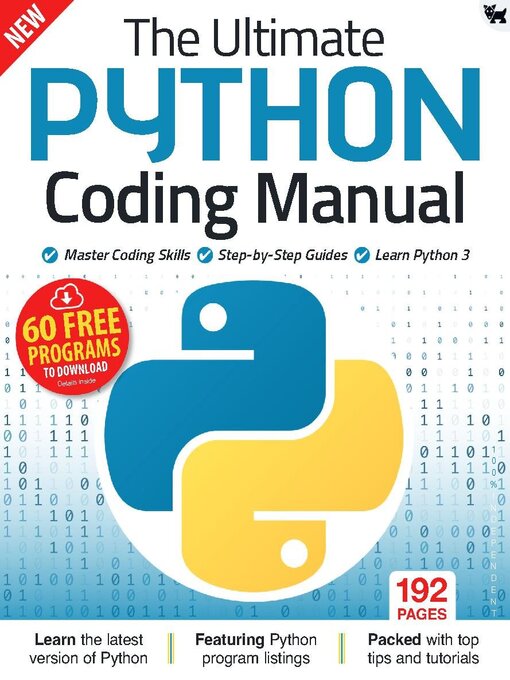The Python Coding Manual. Within these pages are the essential tutorials that will help you progress through the process of building your first piece of code, to tackling variables, numbers and expressions, user input, Python modules, and building and manipulating lists of data. We’ve even included a section called the Code Repository, covering a huge range of different types of Python programming, which you’re free to delve into and use in your own unique programs. Learning Python is great fun, so what are you waiting for?
Print (“The World of Code”)
A Brief History of Coding • It’s easy to think that programming a machine to automate a process or calculate a value is a modern concept that’s only really happened in the last fifty years or so. However, that assumption is quite wrong, coding has actually been around for quite some time.
Choosing a Programming Language • It would be impossible to properly explain every programming language in a single book of this size. New languages and ways in which to ‘talk’ to a computer or device and set it instructions are being invented almost daily; and with the onset of quantum computing, even more complex methods are being born. Here is a list of the more common languages along with their key features.
Creating a Coding Platform • The term ‘Coding Platform’ can denote a type of hardware, on which you can code, or a particular operating system, or even a custom environment that’s pre-built and designed to allow the easy creation of games. In truth it’s quite a loose term, as a Coding Platform can be a mixture of all these ingredients, it’s simply down to what programming language you intend to code in and what your end goals are.
Using Virtual Machines • A Virtual Machine allows you to run an entire operating system from within an app on your desktop. This way, you’re able to host multiple systems in a secure, safe and isolated environment. In short, it’s an ideal way to code.
Equipment You Will Need • You can learn Python with very little hardware or initial financial investment. You don’t need an incredibly powerful computer and any software that’s required is freely available.
Welcome to Python
Why Python? • There are many different programming languages available for the modern computer, and some still available for older 8 and 16-bit computers too. Some of these languages are designed for scientific work, others for mobile platforms and such. So why choose Python out of all the rest?
What can You Do with Python? • Python is an open-source, object-oriented programming language that’s simple to understand and write with, yet also powerful and extremely malleable. It’s these characteristics that help make it such an important language to learn.
PYTHON in NUMBERS • There’s a lot to like about Python, but don’t just take our word for it. Here are some amazing facts and figures surrounding one of the most popular programming languages of recent years.
How to Set Up Python in Windows • Windows users can easily install the latest version of Python via the main Python Downloads page. Whilst most seasoned Python developers may shun Windows as the platform of choice for building their code, it’s still an ideal starting point for beginners.
How to Set Up Python in Linux • While the Raspberry Pi’s operating system contains the latest, stable version of Python, other Linux distros don’t come with Python 3 pre-installed. If you’re not going down the Pi route, then here’s how to check and install Python for Linux.
Python on the Pi • If you’re considering on which platform to install and use Python, then give some thought to one of the best coding bases available: the Raspberry Pi. The Pi has many advantages for the coder: it’s cheap, easy to use, and extraordinarily flexible.
Getting to Know Python • Python...

